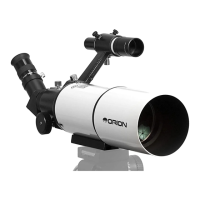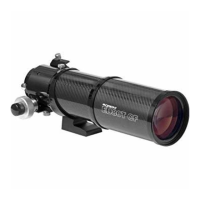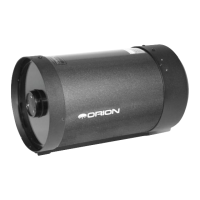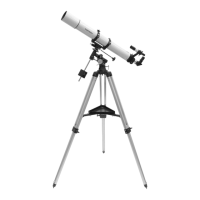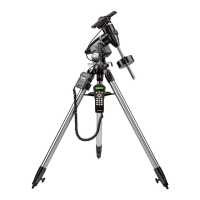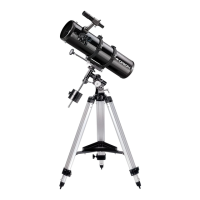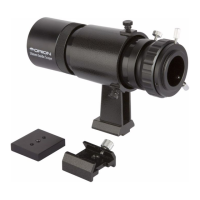12
too bright and devoid of surface shadows to yield a pleasing view. Make sure
to observe the Moon when it is well above the horizon to get the sharpest
images. Use an optional Moon lter to dim the Moon when it is very bright (see
Useful Accessories section below). It simply threads onto the bottom of the
eyepieces (you must rst remove the eyepiece from the focuser to attach a
lter). You’ll nd that the Moon lter improves viewing comfort, and also helps
to bring out subtle features on the lunar surface.
B. TheSun
Never point the unltered FunScope at the Sun — this is not only dangerous to
your eyes, but it will damage the FunScope.
Warning: Do not look at the Sun with any optical instrument without a
professionally made solar lter, or permanent eye damage could result
You can change your nighttime telescope into a daytime Sun viewer by install-
ing an optional full-aperture solar lter over the front opening of the FunScope.
The primary attraction is sunspots, which change shape, appearance, and
location daily. Sunspots are directly related to magnetic activity in the Sun.
Many observers like to make drawings of sunspots to monitor how the Sun is
changing from day to day.
C. ThePlanets
The planets don’t stay put like the stars, so to nd them you should refer to the
Monthly Star Charts in the Community page of the Orion website (telescope.
com), or to charts published monthly in Astronomy, Sky & Telescope, or other
astronomy magazines. Venus, Jupiter, and Saturn are the brightest objects in
the sky after the Sun and the Moon. Your FunScope is capable of showing you
these planets in some detail. Other planets may be visible but will likely appear
star-like. Because planets are quite small in apparent size, you’ll need relatively
high power for detailed observations. Use the power-boosting 2x Barlow lens
included with your telescope! Note that not all the planets are generally visible
at any one time.
JUPITER: The largest planet, Jupiter, is a great subject for observation. You
can see the disk of the giant planet and watch the ever-changing positions
of its four largest moons – Io, Callisto, Europa, and Ganymede.
SATURN: The ringed planet is a breathtaking sight when it is well positioned.
The tilt angle of the rings varies over a period of many years; sometimes they
are seen edge-on, while at other times they are broadside and look like giant
“ears” on each side of Saturn’s disk. A steady atmosphere (good seeing) is
necessary for a good view. You may see a bright “star” close by, which is
really Saturn’s brightest moon, Titan.
VENUS: At its brightest, Venus is the most luminous object in the sky, exclud-
ing the Sun and the Moon. It is so bright that sometimes it is visible to the
naked eye during full daylight! Ironically, Venus appears as a thin crescent,
not a full disk, when at its peak brightness. Because it is so close to the Sun,
